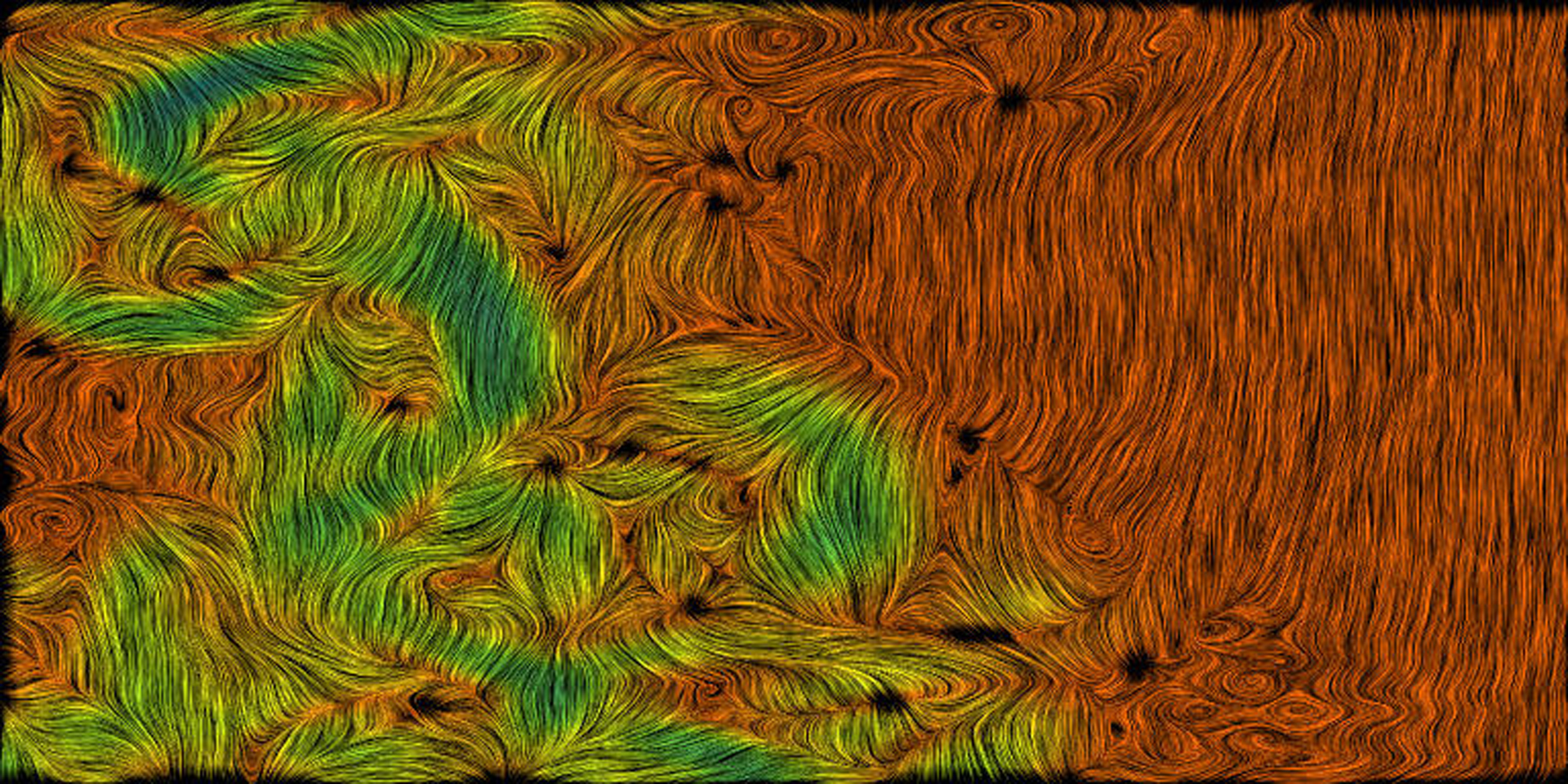“Imaging vector fields using line integral convolution” by Cabral and Leedom
Conference:
Type(s):
Title:
- Imaging vector fields using line integral convolution
Presenter(s)/Author(s):
Abstract:
Imaging vector fields has applications in science, art, image processing and special effects. An effective new approach is to use
linear and curvilinear filtering techniques to locally blur textures
along a vector field. This approach builds on several previous texture generation and filtering techniques[8, 9, 11, 14, 15, 17, 23]. It
is, however, unique because it is local, one-dimensional and independent of any predefined geometry or texture. The technique is
general and capable of imaging arbitrary two- and three-dimensional vector fields. The local one-dimensional nature of the algorithm lends itself to highly parallel and efficient implementations.
Furthermore, the curvilinear filter is capable of rendering detail on
very intricate vector fields. Combining this technique with other
rendering and image processing techniques — like periodic motion
filtering — results in richly informative and striking images. The
technique can also produce novel special effects
References:
1. Bresenham, J. Algorithm for Computer Control of a Digital Plotter. In IBM Systems Journal 4, 1 (1965), 25-30.
2. Bronstein, I. and Semendyayev, K. Handbook of Mathematics. Van Norstrand Reinholt (1985), 291-293.
3. Chang, S. Fundamentals Handbook of Electrical Engineering and Computer Engineering. John Wiley & Sons, Inc. (1982), 264-266.
4. Chui, K. An Intlvduction to Wavelets. Academic Press, Inc. (1992), 49-60.
5. Crawfis, R. and Max, M. Direct Volume Visualization of Three-Dimensional Vector Fields. Proceedings of the Workshop on Volume Visualization, Kaufman and Lorensen Eds (1992).
6. Drebin, R., Carpenter, L. and Hanaran, E Volume Rendering. Computer Graphics 22, 4 (August 1988), 65-74.
7. Dumortier, F., Roussarie, R., Sotomayor, J. and Zoladek, H., Study of Field Bifurcations. Lecture Notes in Mathematics, Springer-Verlag (1991).
8. Freeman, W., Adelson, E. and Heeger, D. Motion without Movement. Computer Graphics 25, 4 (July 1991), 27-30.
9. Haeberli, E Paint By Numbers: Abstract Image Representation. Computer Graphics 24, 4 (August 1990), 207-214.
10. Heckbert, E Filtering by Repeated Integration. Computer Graphics 20, 4 (August 1986), 315-321.
11. Kajiya, J. and Kay, T. Rendering Fur with Three Dimensional Textures. Computer Graphics 23, 3 (July 1989), 271-280.
12. Kenwright, D. and Mallinson, G. A 3-D Streamline Tracking Algorithm Using Dual Stream Functions. IEEE Visualization ’92 Conference Proceedings (October 1992), 62-68.
13. Max, Nelson. Personal Communication (1992).
14. Perlin, K. An Image Synthesizer. Computer Graphics 19, 3 (August 1985), 287-296.
15. Perlin, K. Hypertexture. Computer Graphics 23, 3 (July 1989), 253-262.
16. Pratt, W. Digital Image Processing. 2nd ed. John Wiley & Sons, Inc. (1991), 243-245.
17. Sims, K. Artificial Evolution for Computer Graphics. Computer Graphics 25, 4 (August 1991), 319-328.
18. Sims, K. Choreographed Image Flow. The Journal of Visualization and Computer Animation 3, 1 (January-March 1992), 31-43.
19. Tufte, E. The Visual Display of Quantitative Information. Chesire, CT: Graphics Press (1983).
20. Turk, G. Generating Textures on Arbitrary Surfaces Using Reaction-Diffusion Textures. Computer Graphics 25, 4 (July 1991), 289-298.
21. Upson, C. and Keeler, M. V-Buffer: Visible Volume Rendering. Computer Graphics 22, 4 (August 1988), 59-64.
22. Van Gelder, A. and Wilhelms, J. Interactive Animated Visualization of Flow Fields. Proceedings of the Workshop on Volume Visualization, Kaufman and Lorensen Eds. (1992).
23. Van Wijk, J. Spot Noise Texture Synthesis for Data Visualization. Computer Graphics 25, 4 (July 1991), 309-318.
24. Witkin, A. and Kass, M. Reaction-Diffusion Textures. Computer Graphics 25, 4 (July 1991), 299-308.





